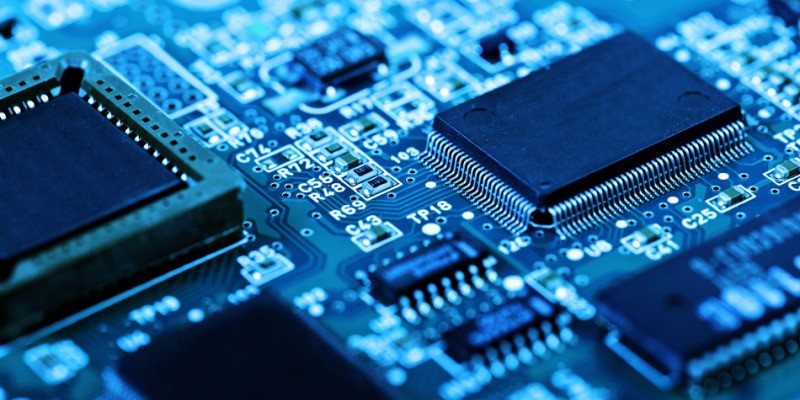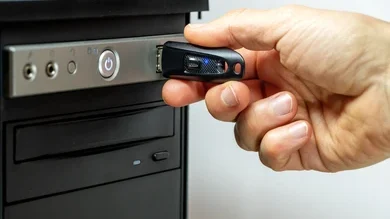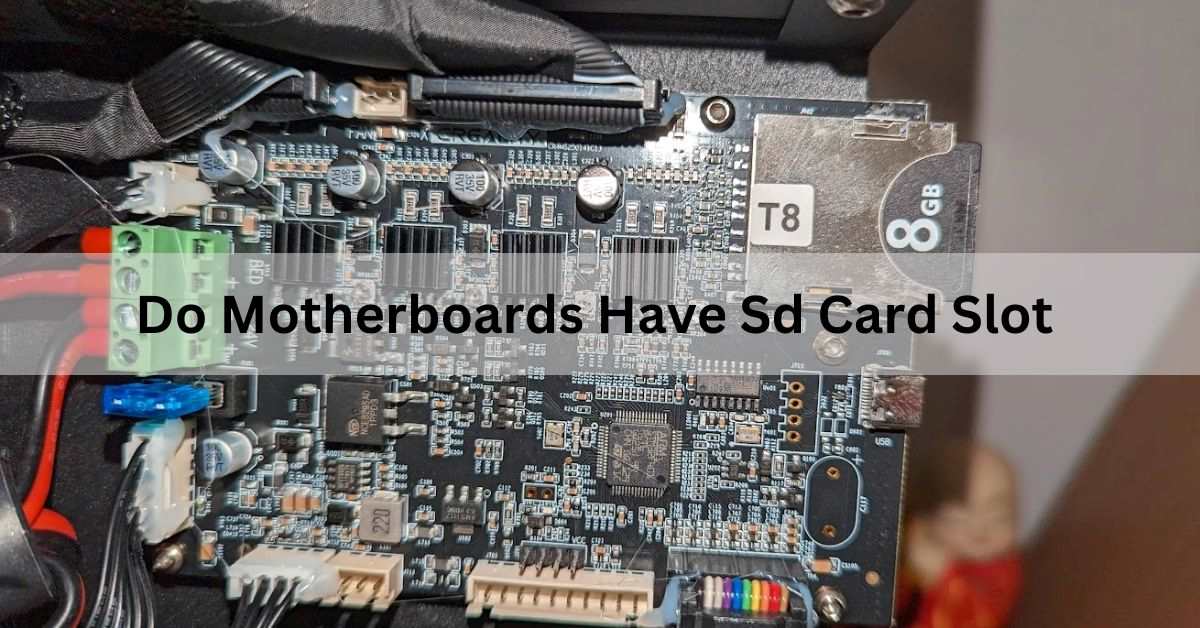Ever wondered if your motherboard has an SD card slot? SD card slots are small but essential components that allow you to easily transfer data from SD cards to your computer. They are common in many electronic devices like cameras, phones, and laptops, but are they standard on motherboards?
“Most motherboards do not have SD card slots. You can use an external SD card reader that connects through a USB port to access SD cards on a system.”
Curious if your motherboard has an SD card slot? Discover whether you can easily transfer photos, videos, and other files directly from your SD card to your computer.
Table of Contents
Definition and Function of a Motherboard!
The motherboard is the main circuit board of your computer. It houses the CPU, memory, and other essential components, acting as the central hub that allows all parts to communicate with each other.

1. Common Components Found on a Motherboard
Motherboards typically include slots for RAM, a CPU socket, power connectors, SATA connectors for storage devices, PCIe slots for graphics cards, and various ports for peripherals. But what about SD card slots?
Overview of SD Card Slots!
SD card slots are small openings on electronic devices that allow users to insert Secure Digital (SD) memory cards. These slots are widely used for expanding storage capacity and transferring data between devices, making them essential for various applications, from photography to computing.
Importance of SD Card Slots in Modern Computing
In today’s digital age, SD card slots play a crucial role in data management. They offer a quick and convenient way to transfer files, backup important data, and expand storage capabilities.
With the growing use of SD cards in cameras, smartphones, and other devices, having an SD card slot on a computer’s motherboard can be incredibly beneficial.
Do Motherboards Have SD Card Slots?
1. Current Trends and Specifications
Most modern motherboards do not come with built-in SD card slots. This trend is due to several factors, including space constraints and the availability of external solutions. Instead, they focus on providing multiple USB ports, which can be used to connect external SD card readers.
2. Historical Context and Changes Over Time
In the past, some motherboards featured built-in SD card slots, but this has become less common as the design focus shifted toward maximizing other functionalities and maintaining a compact form factor.
Benefits of Having an SD Card Slot on a Motherboard!
1. Convenience and Accessibility
Having an SD card slot directly on the motherboard offers the convenience of easily accessing and transferring data without needing an external reader.
2. Enhanced Data Transfer Options
Built-in slots can potentially offer faster data transfer rates compared to some external readers, making them ideal for professionals who frequently work with large files.
Alternatives to Built-in SD Card Slots!

1. External Card Readers
External card readers are widely available and can be connected via USB. They offer flexibility and can be used with multiple devices.
2. USB Adapters
USB adapters for SD cards are another popular solution. They are compact, portable, and often come with multiple card slots for different types of memory cards.
Types of SD Card Slots!
1. Full-size SD Card Slots
These are the standard SD card slots that fit regular SD cards, commonly used in digital cameras and other devices.
2. MicroSD Card Slots
MicroSD card slots are designed for smaller microSD cards, which are often used in smartphones and action cameras. Some readers and adapters can accommodate both types with the help of an adapter.
Do computers have an SD card slot?
Most modern computers do not have built-in SD card slots. Instead, users typically rely on external SD card readers connected via USB, which offer flexibility and compatibility with various types of SD cards.
Do All Motherboards Have SD Card Slots?
No, not all motherboards have SD card slots. Most do not include this feature. Usually, you need to use an external SD card reader that connects via USB. Some laptops and a few special motherboards might have one.
Tips for Choosing a Motherboard with SD Card Slot:
Here are some tips for choosing a motherboard with an SD card slot:
- Check Specifications: Look at the motherboard’s detailed specifications to see if it includes an SD card slot.
- High-End Models: Consider high-end or specialty motherboards, as they are more likely to have this feature.
- Laptop Alternatives: If you can’t find a suitable motherboard, consider a laptop, as many have built-in SD card slots.
- External Readers: If a motherboard with an SD card slot is not available, use a USB SD card reader as an alternative.
- Reviews and Forums: Read reviews and check tech forums for recommendations on motherboards with SD card slots.
Do gaming motherboards typically come with SD card slots?

No, gaming motherboards usually do not come with SD card slots. To use an SD card, you will need an external SD card reader that connects with a USB. Some laptops might have SD card slots, but it’s rare in gaming motherboards.
Why don’t desktop mobos come with SD card slots?
Desktop motherboards usually don’t have SD card slots because most people use USB card readers instead. This keeps the motherboard simple and less expensive. Laptops and some special motherboards might have SD card slots, but it’s rare.
SD card slot typical in desktops or no?
SD card slots are not typical in desktop computers. Most desktops do not have them built-in. You usually need an external SD card reader that connects with a USB. Some laptops might have an SD card slot, but it’s uncommon in desktops.
What is the memory card slot on the motherboard?
A memory card slot on the motherboard is a place where you insert RAM (Random Access Memory) sticks. RAM helps your computer run programs quickly. This slot is different from an SD card slot used for photos and videos.
How do I know if my PC has an SD card slot?
To know if your PC has an SD card slot, check the sides or front of your computer for a small, thin slot labeled “SD.” You can also look in the user manual or the specifications on the manufacturer’s website.
What is the use case of a SD slot on motherboard?
An SD slot on a motherboard lets you directly insert SD cards into your computer. This can be useful for quickly transferring files like photos and videos from the card to your computer without needing an external card reader.
Micro Sd Card Reader On H11dsi Mb?
The H11DSi motherboard does not have a built-in micro SD card reader. To use a micro SD card, you will need an external card reader that connects to the motherboard via USB.
Does my motherboard support booting from SD card?
Most motherboards do not support booting from an SD card. Generally, you need to use a USB drive or another bootable device. Check your motherboard’s manual or settings to see if it has this option.
What is this 4×1 pin connector that connects my SD card drive to my motherboard?

The 4×1 pin connector you see is likely for connecting your SD card drive to the motherboard. It helps transfer data between the SD card and your computer. This type of connector is used to connect various internal devices.
Where do you plug an SD card into a motherboard?
You usually don’t plug an SD card directly into a motherboard. Instead, use an external SD card reader that connects to a USB port on your computer. Some special motherboards might have a built-in card reader, but it’s not common.
What is the memory card slot on a motherboard?
A memory card slot on a motherboard is a place where you can insert memory cards, like those used for cameras or phones. It helps the computer read and use the data stored on these cards.
Where is SD card slot in PC?
In most PCs, the SD card slot is not on the motherboard. Instead, it is usually found on the front panel of the computer case, on the side of a laptop, or as part of an external card reader connected via USB.
Can a laptop’s SD card reader read any SD card regardless of how high its storage is?
A laptop’s SD card reader can usually read most SD cards, but it depends on the reader’s type. Older readers might not support very high storage cards like 128GB or more. Check your laptop’s specifications for details.
What if I do not have an SD slot on my laptop?
If your laptop does not have an SD card slot, you can use an external SD card reader. It connects to your laptop via USB, letting you read and transfer files from your SD card easily.
Can you put a flash drive in the SD slot on a computer?
No, you cannot put a flash drive in the SD slot on a computer. Flash drives and SD cards are different sizes and shapes. You need to use the correct slot or adapter for each type of storage device.
Can you use a USB flash drive with an SD card reader?
Yes, you can use a USB flash drive with an SD card reader if it has a USB port. This setup lets you transfer files between the USB flash drive and an SD card.
How do you insert a flash drive into a computer?
To insert a flash drive into a computer, find the USB port on your computer. Simply push the flash drive into the port until it fits securely. The computer will usually recognize it automatically and show it as a new drive.

Can we connect an SD card to a PC using an adapter or reader?
Yes, you can connect an SD card to a PC using an adapter or reader. Simply plug the SD card into the reader, and then connect the reader to your PC via a USB port.
FAQS:
1. What should I do if my motherboard doesn’t have an SD card slot?
Use an external SD card reader or USB adapter to access your SD card.
2. Are there performance differences between internal and external SD card readers?
Built-in slots can offer faster data transfer rates, but high-quality external readers also perform well.
3. Can I use a microSD card with a full-size SD card adapter?
Yes, you can use an adapter to fit a microSD card into a full-size SD card slot.
4. How do I know if my SD card is compatible with my motherboard?
Check your motherboard or card reader’s specifications to ensure compatibility with your SD card type.
5. What are the best practices for maintaining an SD card slot?
Keep the slot clean, regularly check for firmware updates, and handle your SD cards with care to avoid damage.
Conclusion:
Motherboards typically do not have SD card slots. For transferring data from SD cards, use an external SD card reader that connects via USB. This solution is simple and flexible, suitable for various devices. Always check your motherboard’s specifications for details.


